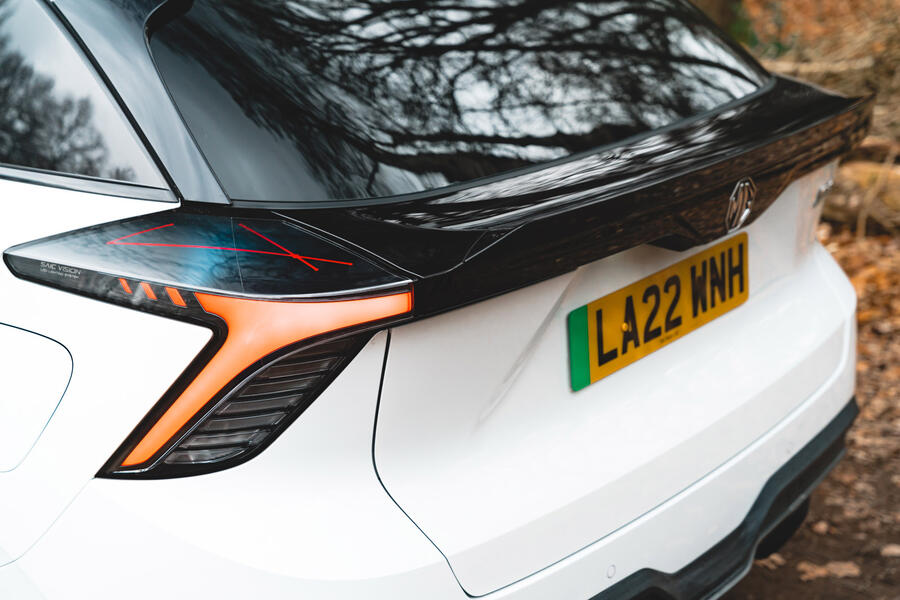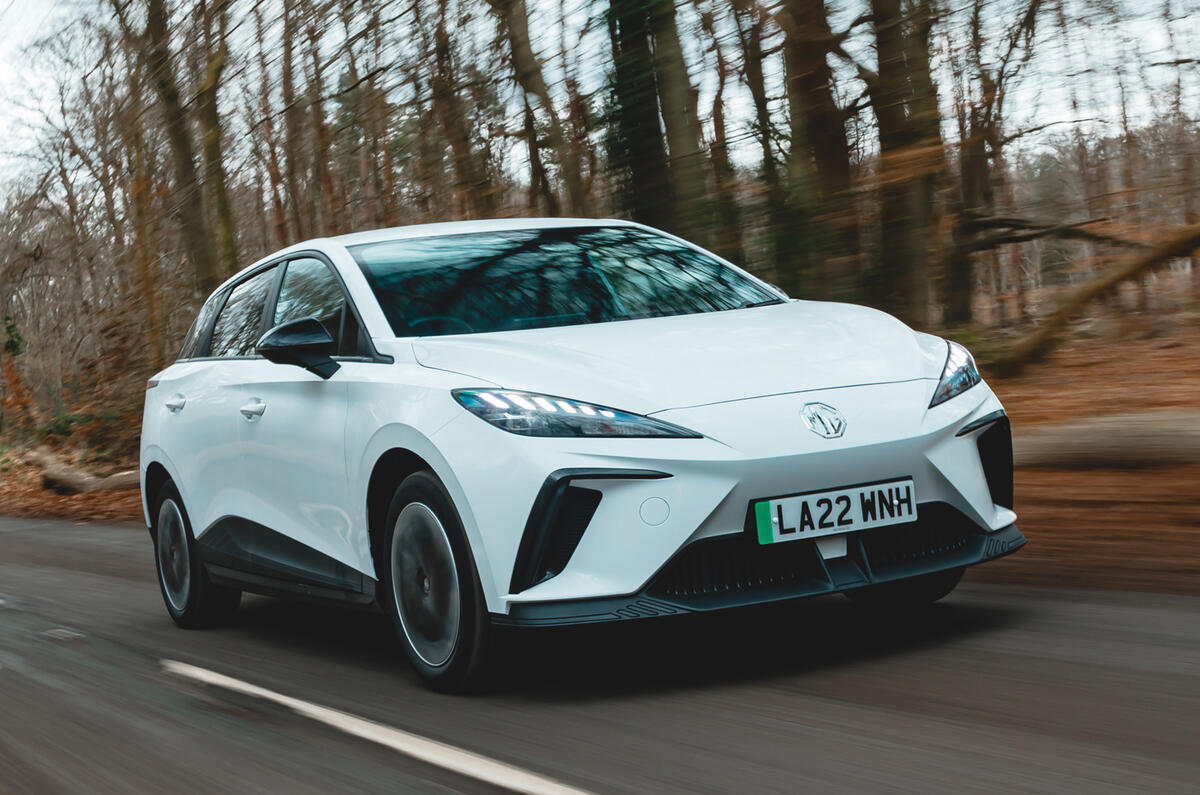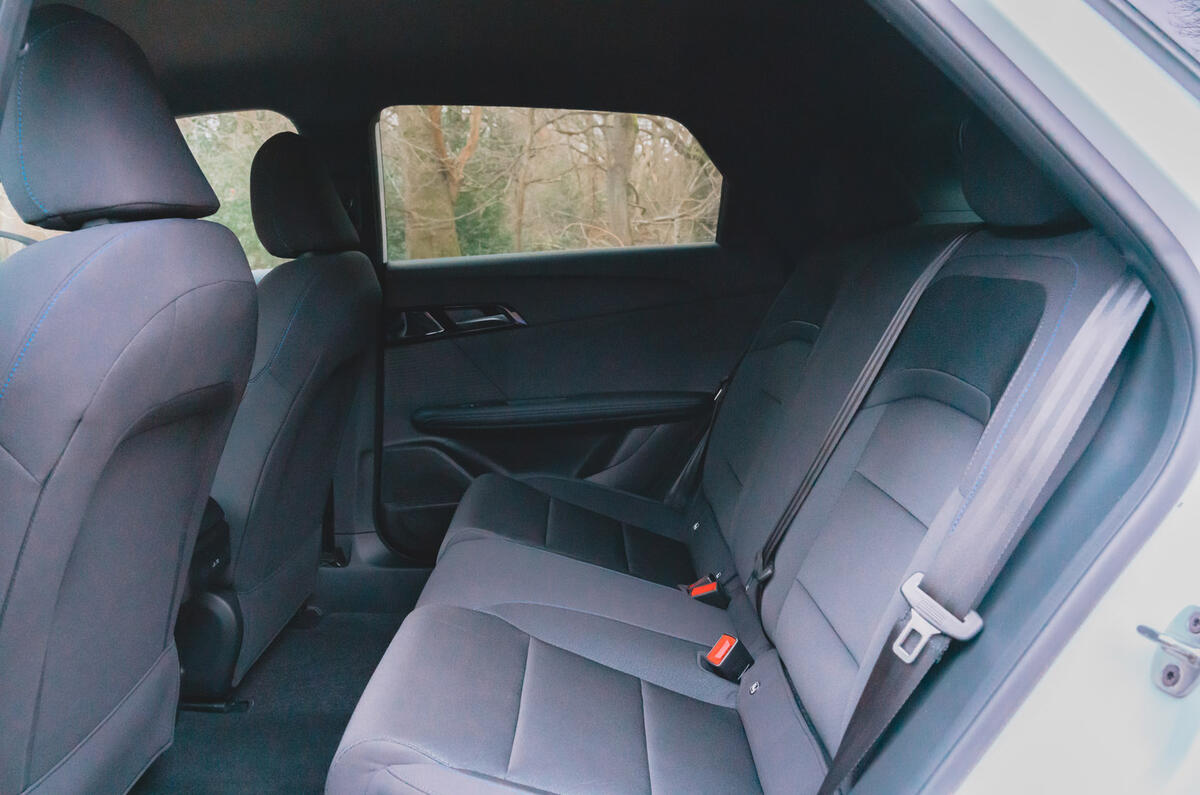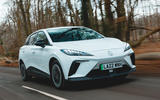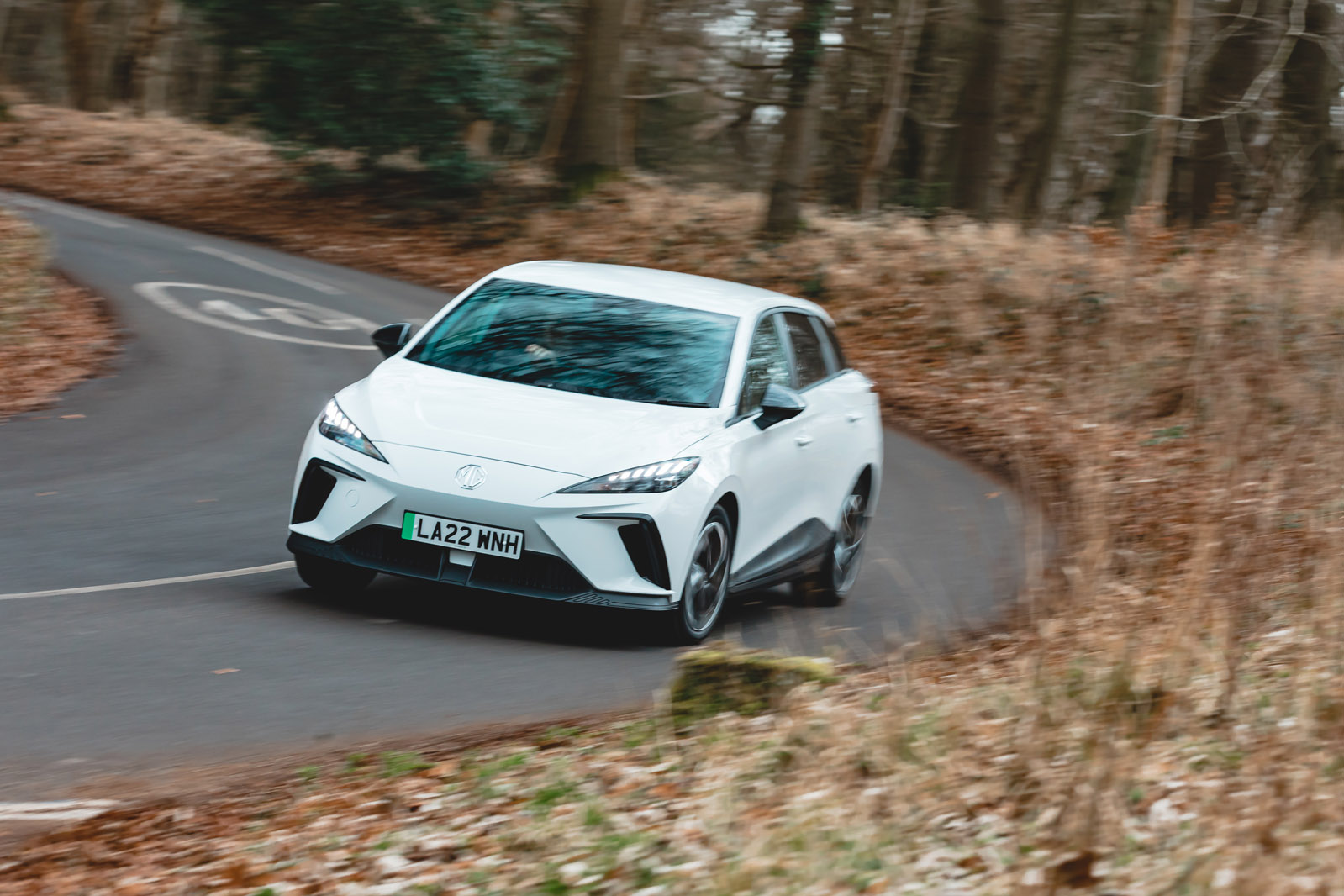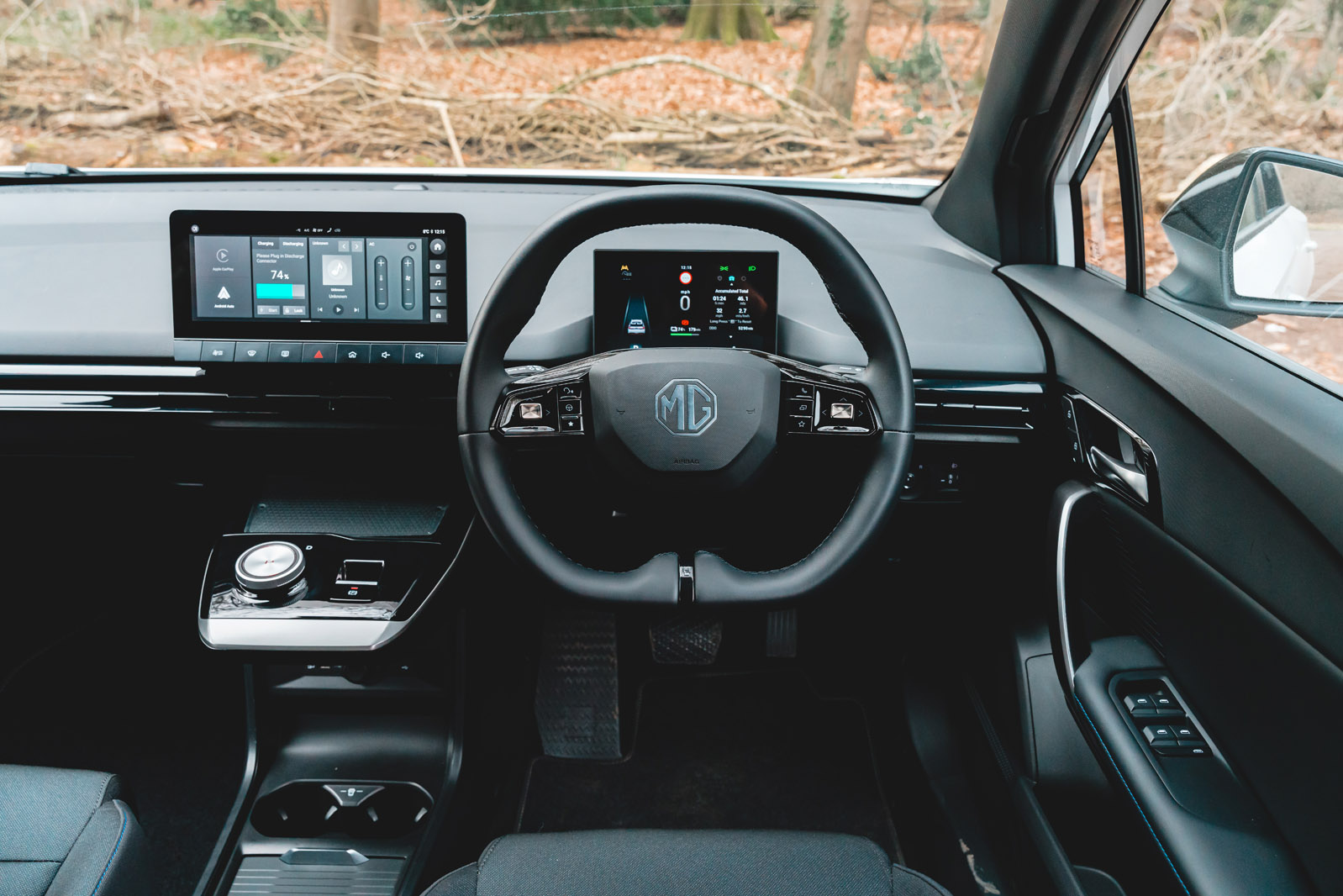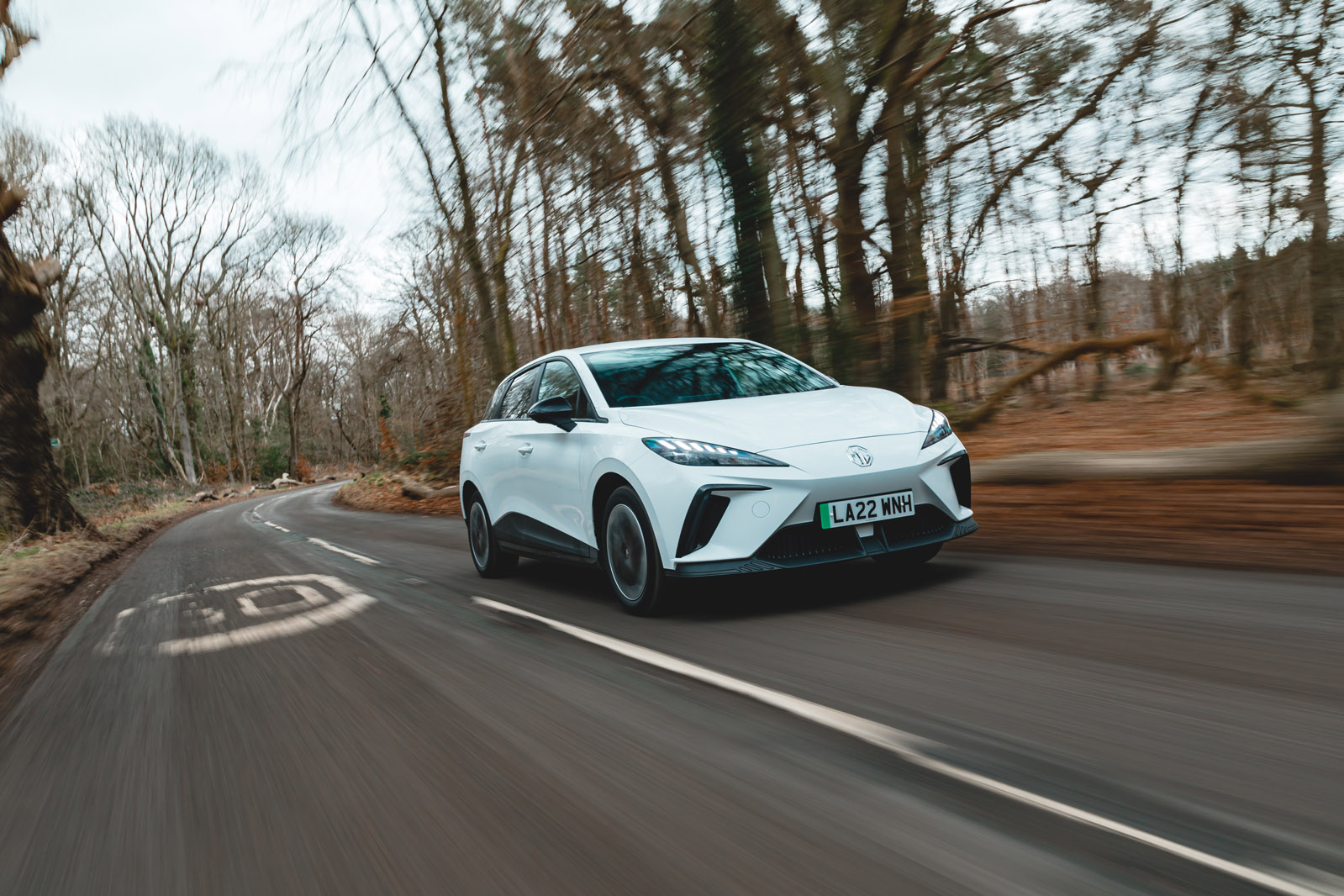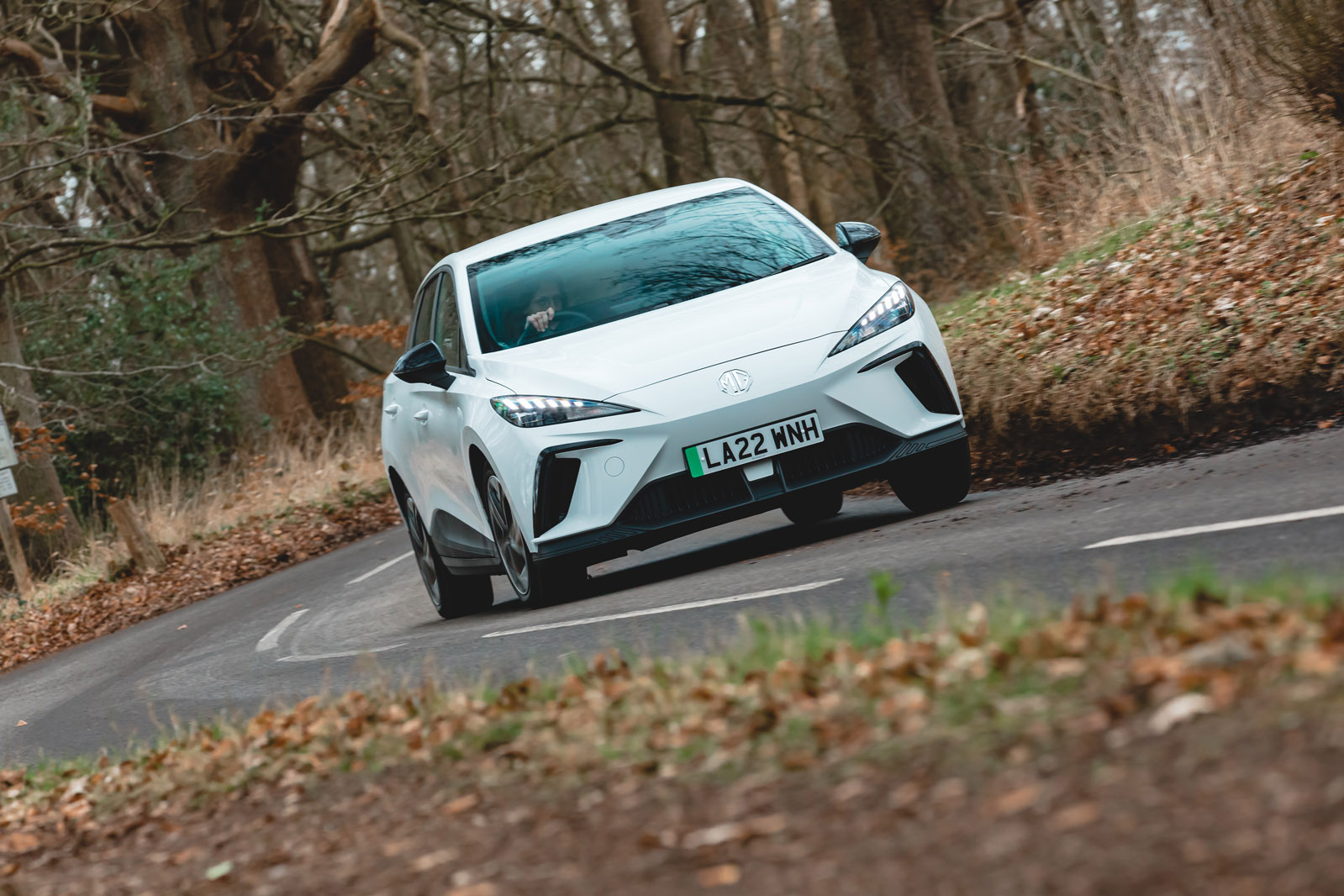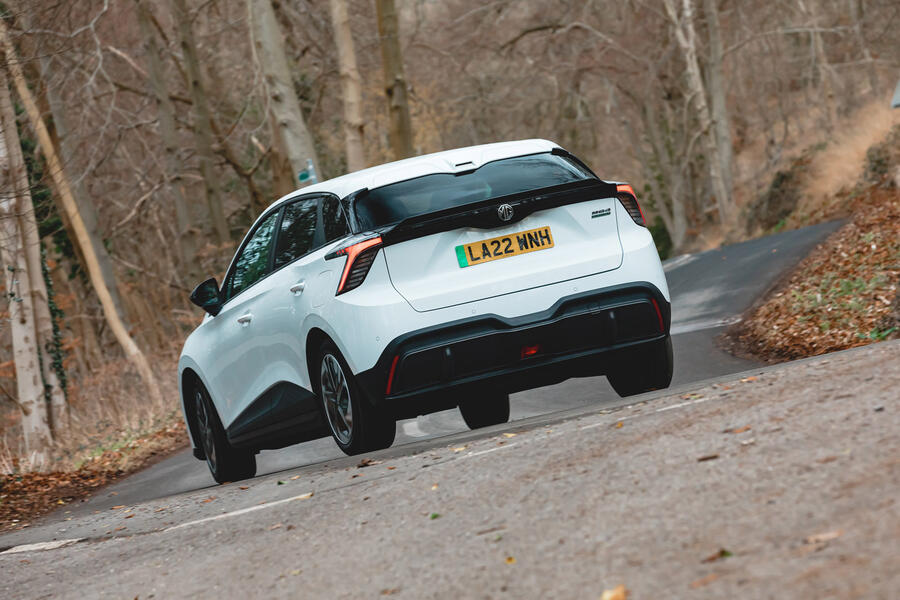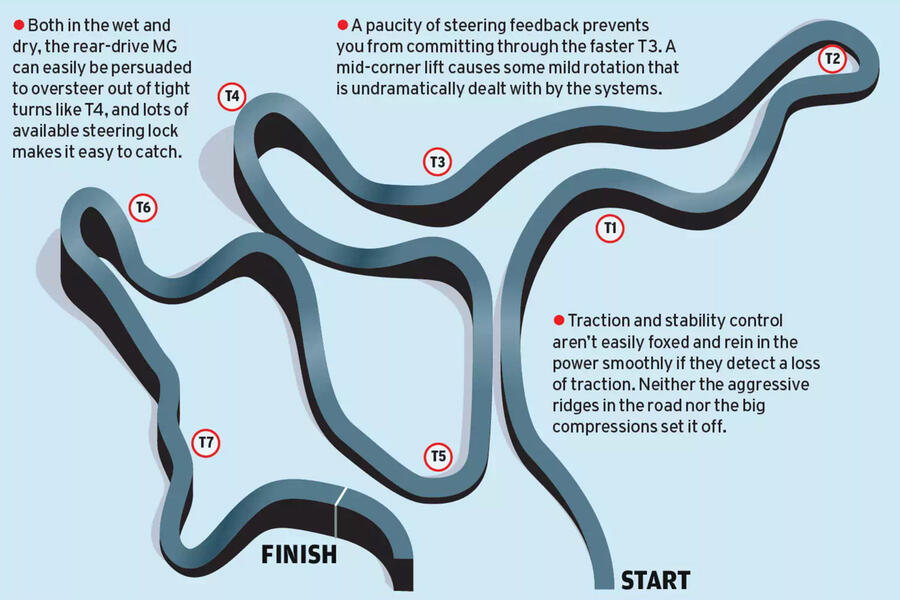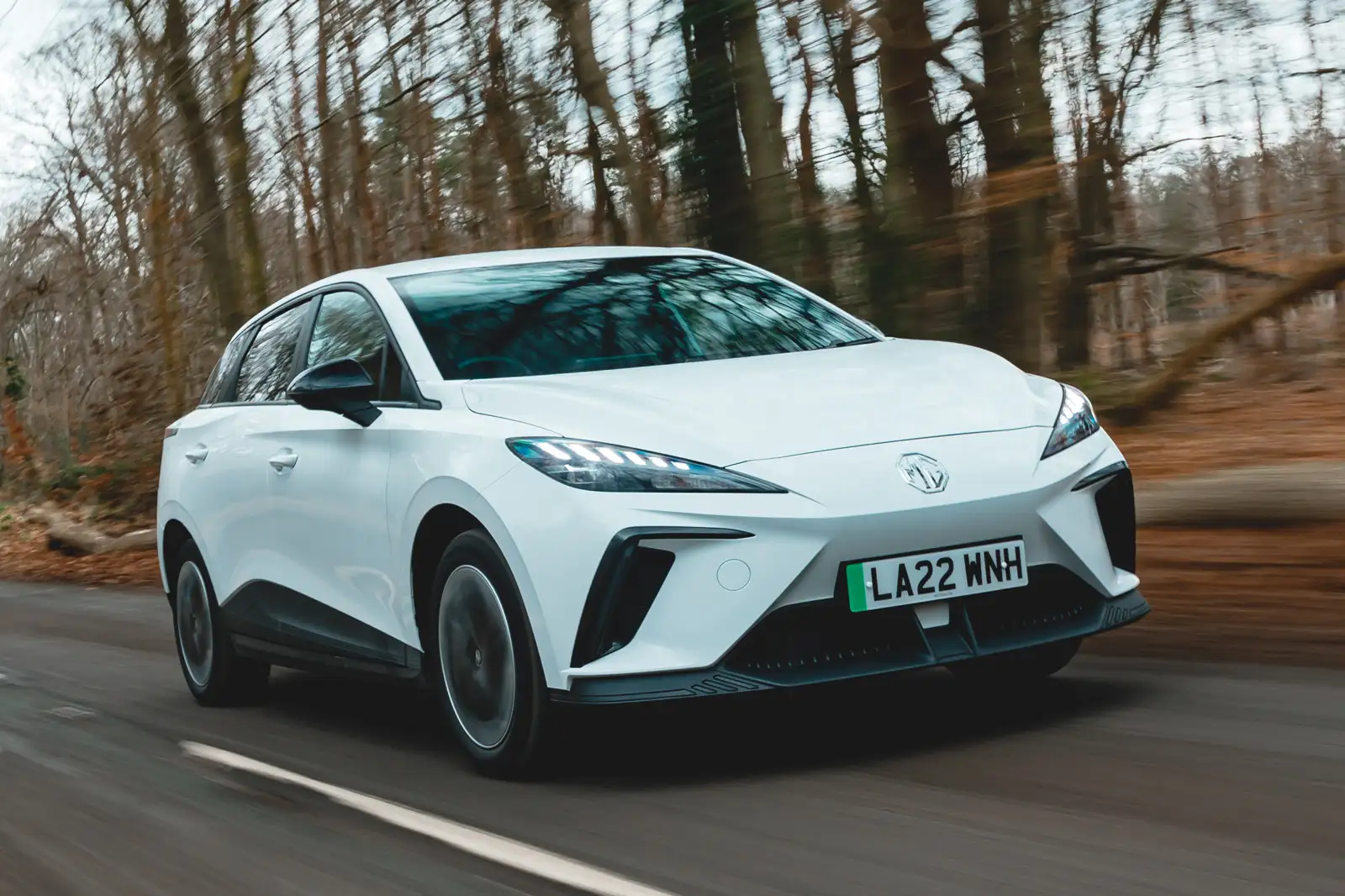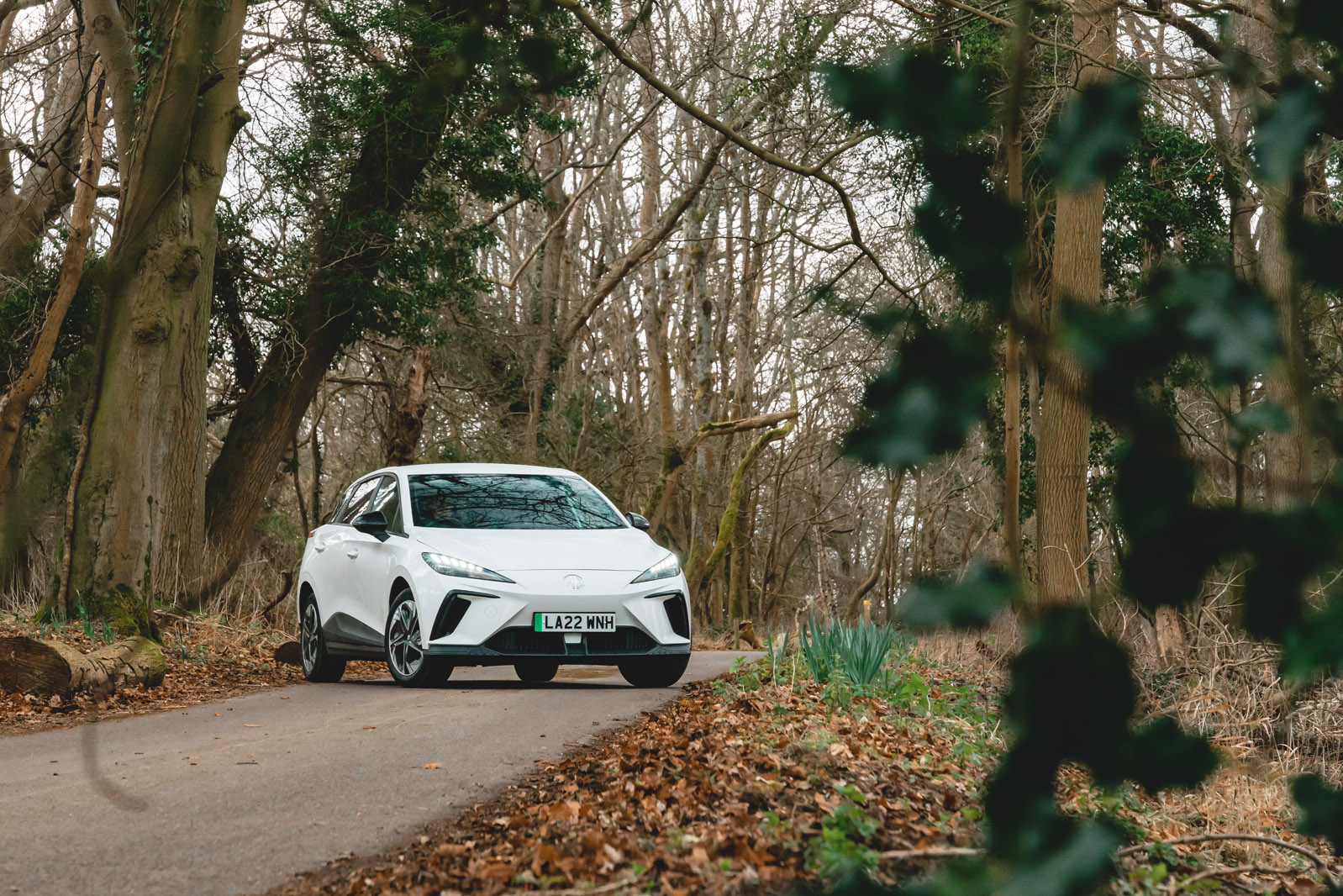Ever since MG’s relaunch under SAIC, it has been positioned as a budget brand, and it is arguably a greater challenge to create a good budget car interior than it is when there is the latitude to cover every surface in metal and leather. It is an art that Dacia has mastered, but MG is still learning. With that said, the MG 4 is a world away from the original MG 5.
Immediately, the MG 4 feels inviting because the driving position is so well conceived. It is unashamedly a hatchback in a world of SUVs and sits the driver low down in the car, legs outstretched and with a generous amount of steering column adjustment. The cloth upholstery in our entry-level SE test car is a little basic but feels hard-wearing and far from unpleasant.
The plastics are mostly hard and scratchy but with a few soft-touch concessions on the dashboard and armrests. Almost everything feels reasonably solid and well screwed together, and switches have a decent heft to them.
The one strange and unfortunate decision is that, while there is some soft vinyl on the door card, the top of the door (where you might occasionally put your elbow) is covered with textured plastic that’s hard and unpleasant yet can be permanently scratched with your fingernail.
At first glance, adjusting the climate control is done exclusively using small, on-screen buttons that are not permanently displayed. However, it’s possible to configure the steering wheel buttons to adjust the temperature and fan speed. It’s unconventional, and we would prefer normal physical controls, but it works surprisingly well.
Oddment storage is reasonably well conceived, with several long bins in the centre console, a decent-size glovebox and some fairly shallow door pockets.
Occupying a middle ground in size between superminis and family hatchbacks, the MG 4 isn’t quite as roomy in the back as a VW ID 3, but thanks to the short bonnet and long wheelbase, it’s still more spacious than a conventional family hatch. What’s more, as the rear bench is angled upwards, it provides a more comfortable seating position than the vast majority of EVs, making the rear of an MG 4 a realistic proposition for adults.
At 363 litres, the boot is about what you would expect of a family hatch, but the floor isn’t quite flat, which makes the false floor you get in a Trophy car a useful addition, particularly as that creates an ideal place to store the charge cables.
Multimedia system
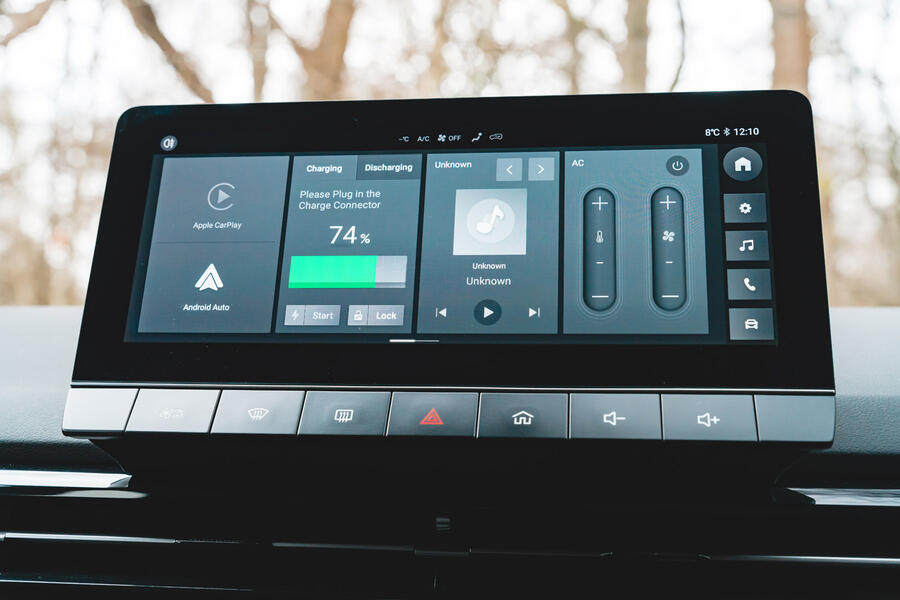
MG’s multimedia system is a fairly basic touchscreen interface, so while it won’t win any prizes, it’s easy enough to fathom. The screen responds reasonably quickly but requires quite a firm prod, and some of the buttons and text are on the small side. There are physical home and volume buttons, as well as a row of virtual shortcut buttons, though annoyingly those disappear when you switch to phone mirroring, as does the climate control panel. Both Apple CarPlay and Android Auto require a wired connection, but there is both a USB-A and USB-C port in the front, with an additional USB-A port in the rear.
Our SE test car had no built-in navigation. You have to upgrade to Trophy trim for that. Having tried the navigation system on another occasion, it’s not worth the extra outlay. It provides fairly clear instructions and is easy enough to use but is no match for Google Maps when it comes to traffic monitoring.
